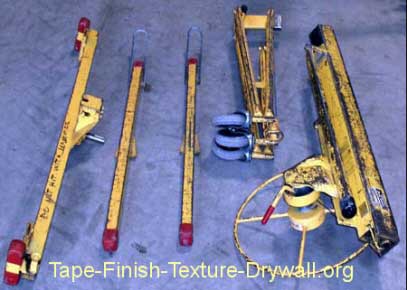







|
How to Hang Wallboard Ceilings that NEVER SAG! The following how to hang wallboard tips are for building SAG-PROOF ceilings -
Always choose 5/8-inch drywall with one exception: If your framework is spaced at 16-inches, you can use regular 1/2-inch drywall with no risk of sagging.
If you decide to use green (water-resistant) drywall panels on a CEILING, keep in mind that the rules are DIFFERENT regarding sag resistance!
The materials/additives that are used to make the panels water-resistant also serve to weaken their resistance to sagging.
This means that your framing MUST be spaced at 12-inches for the 1/2-inch thick green board (to prevent sagging), and your framing MUST be spaced at 16-inches for the 5/8-inch thick green board For highest strength and sag-resistance, hang the sheets perpendicular to the framing members. Installing drywall ceilings this way also gives you a more uniform ceiling if the framing members are slightly out of alignment.
When it comes to ceilings (or walls): Never over-insulate! For example, if you try to force 10-inch insulation into a 6-inch cavity,
you will not increase the R-value of the insulation. You will only create excess back-pressure against the drywall which can cause many problems. Whenever a do-it-yourselfer asks me about how to hang wallboard ceilings, I ALWAYS tell them to use a lift! A drywall-lift makes installing drywall ceilings EASY! These are available at most tool rental shops, and they break-down into smaller pieces that can fit into the trunk of a car! Notice that the table tilts for angled walls and ceilings. For ceilings, ALWAYS use drywall screws wherever possible (instead of nails). No glue is required when screwing the drywall directly to the framework on ceilings.

You'll find a step by step plan for correcting most cases of sagging ceiling. This method actually supports the existing ceiling and gives you the same quality results as new construction without the mess, labor, and health-risks of a complete tear-out!
Related Articles:
Tips on Hanging Drywall - Links
|


